Elliptical Squeak – How to Fix a Noisy Cross Trainer
Ellipticals are a favourable method of working out in the comfort of your own home. They provide a full body cardiovascular workout and aren’t too intrusive in size. Looking for the best cross trainer? Find more in our roundup article.
Ready to start your elliptical weight loss journey? Try out our 8-week elliptical program!

As it provides a low impact workout it doesn’t create a lot of noise like other home workout equipment such as a treadmill. But what about the dreaded elliptical squeak while you workout? This unwanted noise can be a huge distraction during your workout.
Whether you pedal your elliptical backwards or forwards it needs to be a smooth and fluid motion without any noise.
But why does my elliptical make noise? An Elliptical squeak is often a result of friction of moving parts within the machine. Lack of lubrication on particular pivot points causes the machine to make a squeak.
Simply applying a thin layer of all-purpose oil to the pivot points on the handle bars and pedal arms to quiet the squeak. I recommend this:
To further prevent squeaking, lubricate all moving parts during routine maintenance of the elliptical. If it remains untreated it can cause long term damage to the moving parts so shouldn’t be ignored.
Here are some of the main reasons for a squeaky cross trainer and how to fix them. In most cases this will stop the squeaking noise.
But some should only be performed if you’re familiar with your cross trainer build. Always read the manual before attempting repair.

What can I use to Lubricate My Elliptical?
As mentioned, the main culprit to the squeak is friction of moving parts, make sure you regularly lubricate your elliptical. Using a spray multipurpose grease to lubricate the bolts connecting the lower arms and handlebars.
Using spray gets into the difficult areas so make sure to spray on the bolts that connect the mainframe with the arms. Here’s a good option for lubricating spray:
Also apply grease beneath the pedals and around the roller arms. Using marine grease is recommended because it allows for more time between lubrication, it’s designed to last longer and lubricate gears.
Once lubricating is complete, use the elliptical for a few minutes to allow the grease to evenly spread throughout the applied parts. Be sure to wipe away excess liquid after application which can gather dust.
Squeaky Cross Trainer Causes
Collection of Dust
Over time, dust can settle on the moving parts of your elliptical trainer. Typically it clogs where the belt meets the wheels. The unwanted squeaking is a result of the friction this causes. You can avoid this by dusting around the elliptical periodically.
Using dedicated dust cloths will leave no dust behind and keep your elliptical cleaner for longer:
If you want to do a more comprehensive dust, detach the shell of the elliptical. You can do this by unscrewing the screws that connect the mainframe and shell.
Clean the inside thoroughly with a vacuum or cloth. Ensure the cloth is dry because a wet cloth can trap moisture inside the machine which will cause the metal parts to rust.
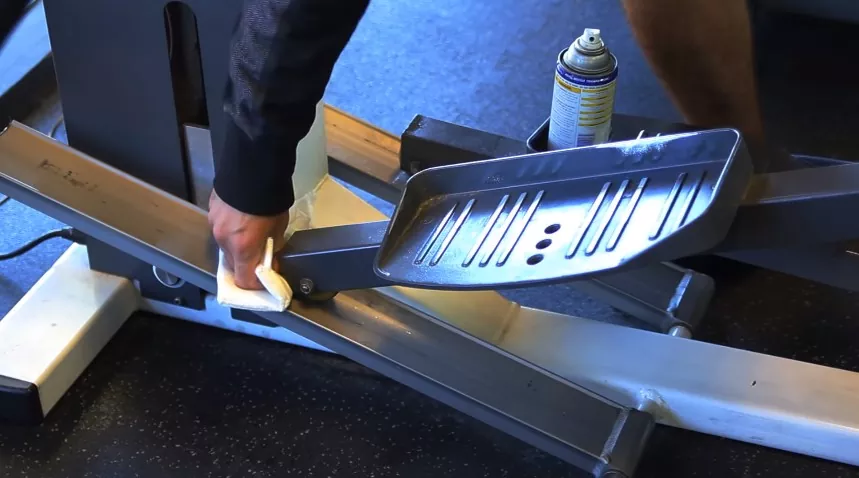
Check the floor level
It’s important you check the machine is situated on an even floor. Squeaking noise can be created from unnecessary stress on the moving parts when the elliptical is on an uneven surface.
Loose Bolts
Any loose bolt connection can affect the alignment of other parts of the machine. When you perform regular maintenance check any loose bolts as this can cause squeaking while in use. Most manufacturers include a toolkit with the machine, this can be used to tighten any loose bolts.
If none of the above steps eliminate the squeaking noise then it’s time to call a professional. Regularly performing maintenance to your machine will extend the life of the elliptical. You want to be able to keep your elliptical squeak-free and in a great condition.
Check out this useful video on how to stop elliptical squeaking:
Why is my elliptical making a clunking sound?
Other Elliptical Noises
Age of machine:
Older elliptical machines tend to be noisier and typically have a knocking sound. This is caused from the rotating arm inside the flywheel housing knocking against the plastic.
Cross trainers are subject to a lot of twisting around the centre axis, this is known as torsional force. Usually this is worsened by ellipticals not being placed on a hard and flat surface.
Drive belt:
Once the drive belt is worn it will create a noise within the machine. If you are manually doing checks of the machine look out for rubber bits inside the housing where the drive belt sits. This is a sign of wear and tear.
You can also check the belt itself, look out for any cracks or splitting. Drive belts can be easily replaced if any of these signs emerge.
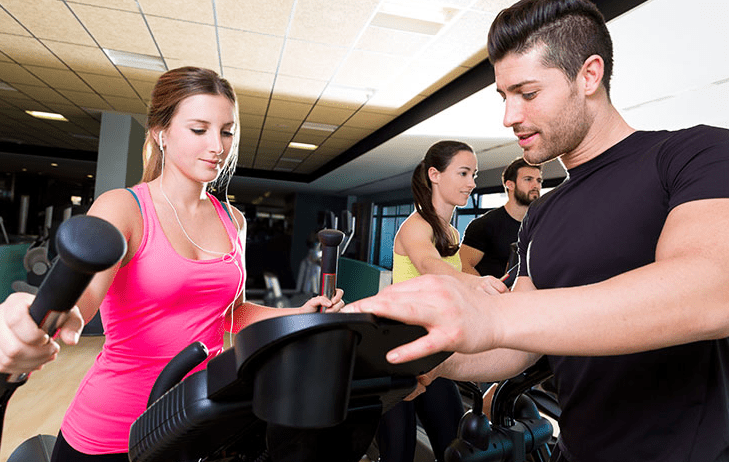
Rollers
One of the most common items in an elliptical to start to wear is the roller for the right and left platforms. As you are likely to be wearing trainers while you stand on the platforms they bring dirt to the machine, wipe down the platforms and rollers after every use.
Dirt can build up over time causing the wheels to wear which can cause a squeaking or grinding noise.
Console, frame and arms
After regular use of your machine, over time arms and screws do start to become loose. When bolts aren’t tight in the arms or console it can cause a knocking sound when the plastic housing starts to hit the upright.
Regularly check assembly points around the plastic shrouds. Most can be tightened by an allen key thats provided by the manufacturer or phillips screwdriver.
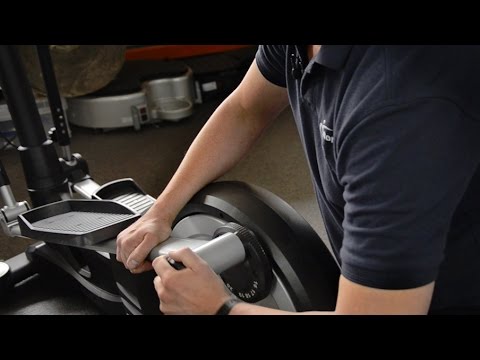
Elliptical Flywheel Noise
Common elliptical flywheel noises are similar to a clunking or clicking noise. An expensive model such as Proform or NordicTrack offer great technical support to help you on the spot, send out an engineer to fix or replace the flywheel under warranty.
There can be several reasons for an elliptical flywheel noise, one common reason is the wheel that attaches to the stride handle can crack. If it’s not covered under warranty, you can potentially replace this yourself but the spare parts tend to be expensive.
One DIY method to fix this is using an allen key, replacing the cracked wheel with the wheel that raises the ramp up and down. This is because it doesn’t get as much activity being placed here, there is less activity than the stride wheel as this dictates the stride length.
One thing to note is that the wheels are secured by C-ring clamps, so you may need to use pliers to remove these.
For general elliptical flywheel clunking noises follow these steps for routine maintenance:
Pedal Arms:
- Using a flat screwdriver, unscrew the tabs that hold the front top cover in place. This exposes the flywheel and pedal arm connection points. Start to rotate the flywheel by hand, if the flywheel doesn’t have a smooth motion this will determine whether you need to lubricate the flywheel. If the bearings are exposed, use grease with an extension nozzle to lubricate the bearings.
- If the bearings are damaged they need to be removed. You can do this by holding the flywheel with one hand and using a wrench to loosen the bolts that secure the pedal arms on each side of the flywheel. Start to pull the arms away from the flywheel and remove the bearings from either side.
- Test if the bearings are damaged, but if not you can lubricate them thoroughly with grease and reattach them. Once the bearings are reattached or replaced (if damaged) then reattach the pedal arms back to the flywheel as well as the main frame. covers
Link Arms:
- Unplug the power cord. Identify the pivot points where the footpad and lower handlebars connect on each side of the machine. Remove the elbow covers at each connection point using a screwdriver. This will expose the pivots.
- Use a box wrench on the lock nut at the inside of the pivot while loosening the bolt with an allen key. Remove the bolt and replace the nylon spacers, repeat this on the opposite side of the machine too. Once complete, reassemble the connection and attach elbow covers.
- This part requires a second person to help. One person holds the deep socket against the inside face of the pivot hub. Make sure the socket is large enough to allow the bearing to pop out. Insert the point of a flat screwdriver into the outside of the hub until it contacts the bearing. Tap the handle of the screwdriver with a hammer to remove the bearing. Repeat this to remove the bearing on the opposite side.
- Hold each bearing next to one ear and turn the inner race with your finger. If you hear grinding noises or the bearing is rough, it must be replaced. Lubricate the bearing with lithium grease and a
buy some reliable grease with a handy application attachment to get into hard to reach areas like this:
You may need to get this resolved sooner rather than later – particularly if you put your cross trainer upstairs. If you invest in a good elliptical machine then technical support are always on hand to give you specific help for your model.
Are Cross Trainers Loud?
Elliptical trainer usually has a quiet operation with a noise level as soft as a whisper. But sometimes, they can make loud noises.
What Makes a Cross Trainer Loud
All elliptical machines do not produce noise at the same level. For instance, budget elliptical units are noisier than pricey ones because they have low-quality parts.
The cheap materials make ellipticals less durable and stable. In addition, they have weight distribution issues, which makes them wobble.
So, if you want to use a quiet elliptical trainer, ditch the cheap options and purchase mid-price or pricey units.
You should also consider these four features:
#1 Weight of Flywheel
Flywheel is an important part of the cross trainer. Thus, you need to consider its weight. Depending on the design of an elliptical unit, a flywheel can be present in its center, rear, or front.
As the flywheel in a cross trainer is responsible for moving handlebars and pedals, it determines how quiet or smooth your workout can be.
For instance, if your elliptical has a heavier flywheel, the unit will have less impact on the floor and be more stable. In addition, heavier flywheels do not make the moving part rattle, which helps in reducing the noise output.
Ideally, elliptical flywheel weight ranges from 5 to 18 kg. To use a quieter elliptical, you can pick a cross trainer with a flywheel weight of 9 kg or more. Better-quality flywheels also increase the durability of elliptical units.
#1 Resistance Mechanism
Elliptical trainer machines come with two resistance systems, i.e., air/fan-based and magnetic.
If you have a cross trainer with a magnetic elliptical, the resistance levels can be easily adjusted by increasing the magnet’s strength. Surprisingly, the boost in strength of magnets does not produce a loud sound.
In contrast, if you have an air elliptical unit, you must pedal fast to achieve higher resistance. But loud noise and vibration are created due to the friction from the rotating fan.
You can surely find an air elliptical with less noise. But to experience the joy of using a quieter elliptical, you must pick a magnet-based adjustable unit.
#3 Drive System
The drive system in cross trainers fits around the wheel and pedals to help them work together. It can either be a belt or chain drive. But all the modern cross-trainer models have belt drives for a quieter experience and affordable maintenance.
#4 Rear Stabilizers
Rear stabilizers are parts of an elliptical trainer that are responsible for keeping the unit stable on uneven surfaces. That means there would be no wobble-generated noise.
But most of the elliptical units in the market do not include these parts. So, you need to thoroughly analyze before buying to get a compatible leveler. Always assemble the elliptical unit parts correctly to avoid loud noise generated by improper assembly.
How to Reduce Noise on an Elliptical
Do you already have a cross-trainer at your home, which generates loud noise? Look no further because we have listed four tips to help you make your elliptical machine quieter.
- Keep Your Elliptical Unit On a Rubber Mat: If your cross trainer unit makes a loud noise, you can simply place a rubber mat under it. Multipurpose rubber mats can easily reduce noise and vibration while keeping your machine stable.
- Regularly Clean and Maintain Elliptical: The metal parts in the elliptical trainer can easily get rusted. But with regular lubrication and dusting, you can increase its lifespan. Regular maintenance also reduces loud noises.
- Fix Any Loose Nuts or Bolts: By occasionally checking the parts of an elliptical machine, you can retighten any loose nuts or bolts. It also reduces noise and makes your elliptical machine work as new.
- Replace Old Parts When Needed: Old parts in the cross trainer machine can produce a loud noise. Hire professionals for the repair and replacement work.
Types of Cross Trainer Noise
Below are common noises that your cross-trainer can make:
- Creaking: When you assemble the unit from weak parts, they get twisted and create creaking noise. A quick remedy for this issue is fixing loose screws.
- Crackling: Damage in the ball bearing of the cross trainer produces crackling noise. Fix this issue by re-greasing and re-adjusting the bearing clearance.
- Squeaking: When the moving parts of the elliptical trainer do not move smoothly, it causes squeaking noise. Thoroughly clean and lubricate the elliptical unit to reduce this noise.
- Clatter: During the operation of the cross trainer, you can hear a loud clatter sound. It is produced from loose parts rattling against each other. The problem can be easily fixed by tightening the loose parts.
- Buzz: A loud buzzing sound indicates a defect in the brake or drive element. Contact professionals to fix this issue.
An ex-triathlete, fitness coach and writer with a Masters in Sports Physiology. Fitness is my passion and I've had my fair share of home fitness equipment tried and tested!


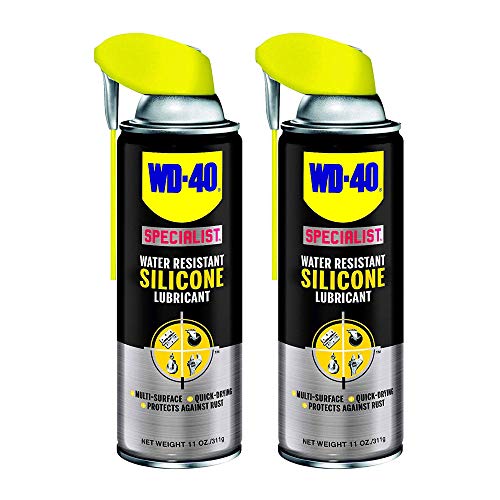

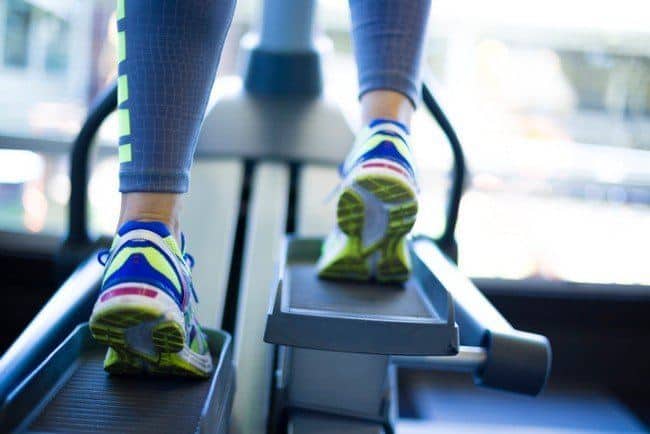
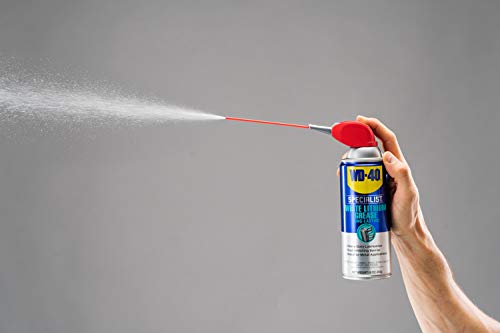


2 Comments